All Le Fort fractures involve the pterygoid plates, and separate a portion of the midface from the cranium. Le Fort I, II, and III patterns often occur in combination and can overlap with other complex fracture patterns such as midface smash, naso-orbito-ethmoid fracture, and Zygomaticomaxillary complex fractures.
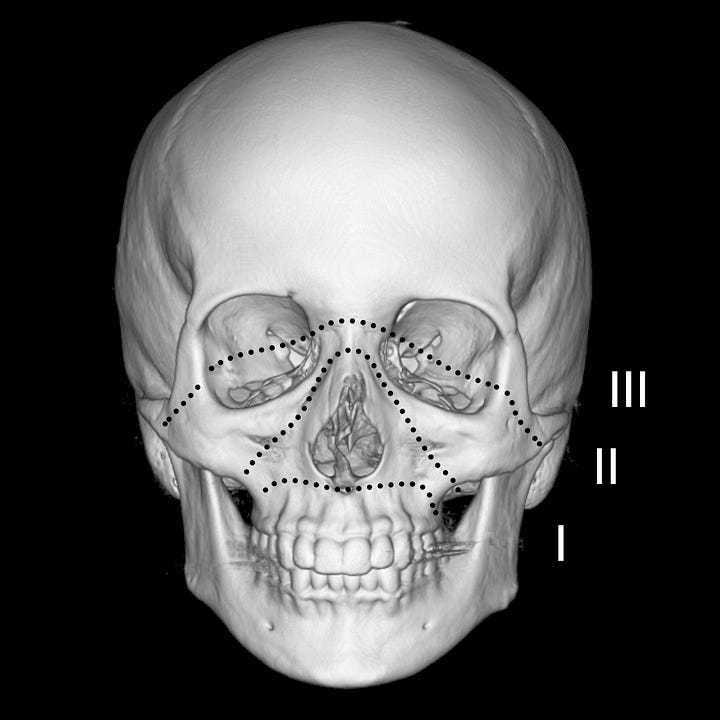
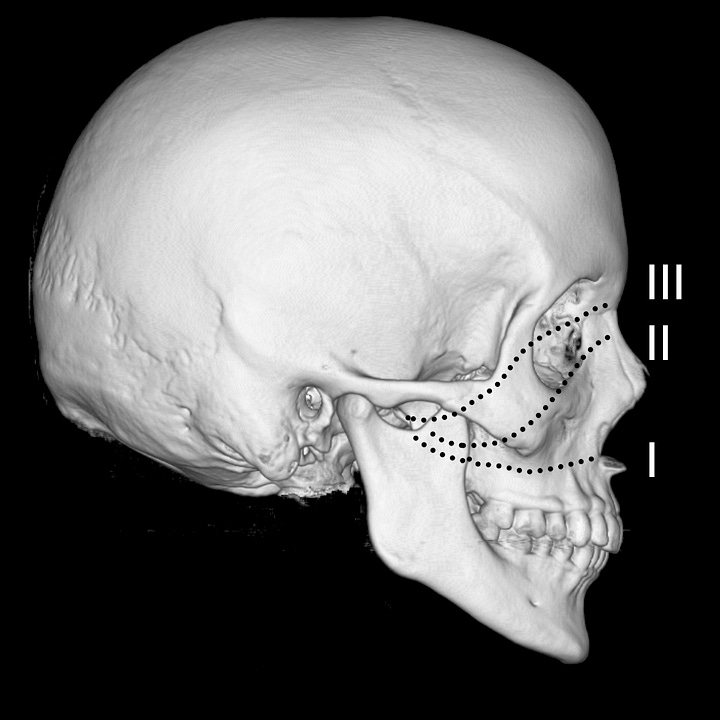
Le Fort I, II, and III patterns.
The Le Fort I fracture is a horizontal maxillary fracture that traverses the pterygoid plates, inferior maxillary sinus, and nasal septum, separating the maxillary alveolus from the upper face. This injury can often be diagnosed on physical exam based on isolated mobility of the hard palate (“floating palate”). Le Fort I fractures always involve the inferior maxillary sinus walls and do not extend to the orbits or upper nasal bones.
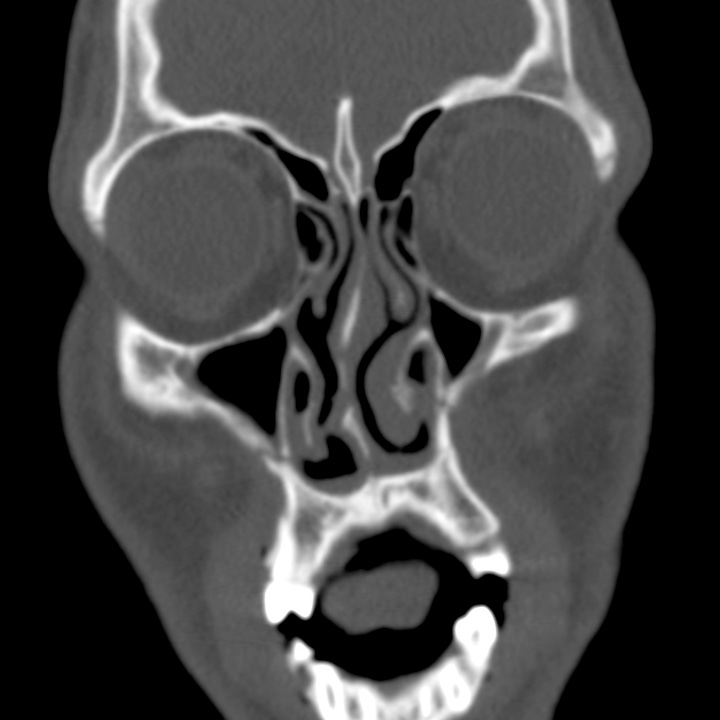
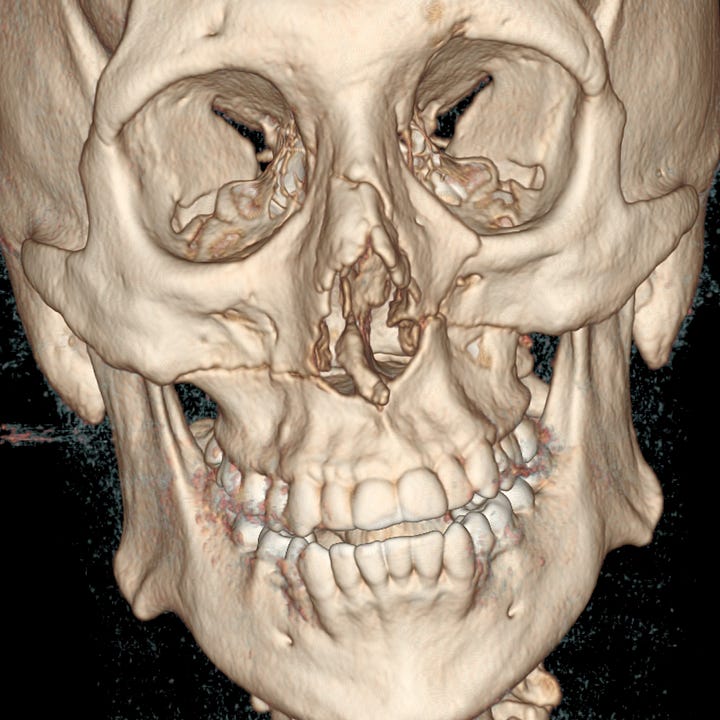
Le Fort I fracture. A transverse fracture of the maxilla extends to the inferior maxillary sinuses and nasal septum. An additional fracture of the left orbital rim is present. The orbits and upper maxillae are otherwise intact.
Le Fort II fractures are pyramidal midface fractures that involve the maxillary antra and inferior orbital rims, intersecting at the glabella. The fracture follows an oblique course from the bridge of the nose to the pterygoid plates and separates the maxilla, anterior nasal bones, and anterior orbital floor and rim from the remainder of the skull. Le Fort II fractures do not involve the lateral orbital walls or zygomatic arches. The absence of an infraorbital rim fracture excludes a Le Fort II injury.
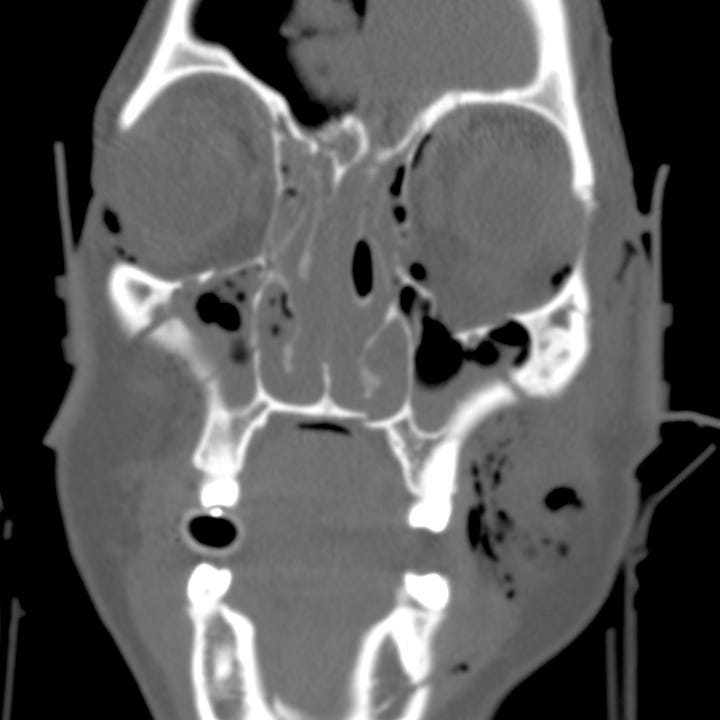
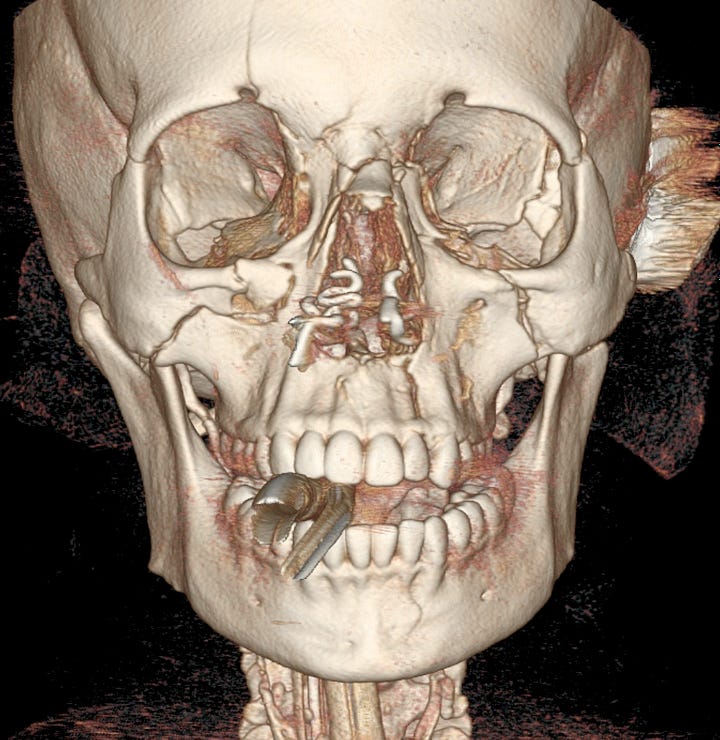
Le Fort II fracture. This Pyramidal fracture involves the inferior orbital rims, anterior maxillary sinus walls, and nasal bridge.
Le Fort III fractures separate the entire midface from the cranium. The fracture passes horizontally and posteriorly through the nasofrontal suture, frontomaxillary suture, lateral orbital wall, zygomatic arches, and pterygoid plates. Zygomatic arch fracture, best visualized on axial CT images, is unique to a Le Fort III fracture, and its absence excludes the diagnosis.
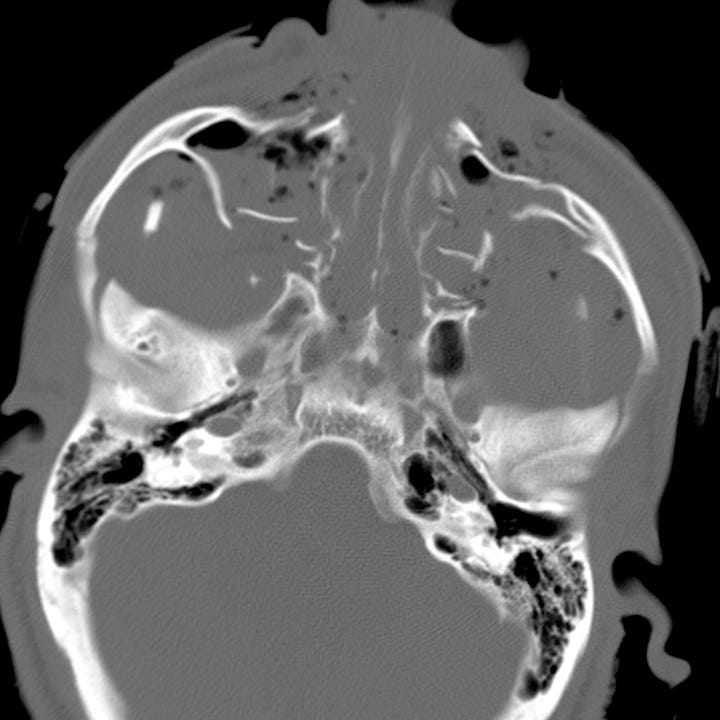
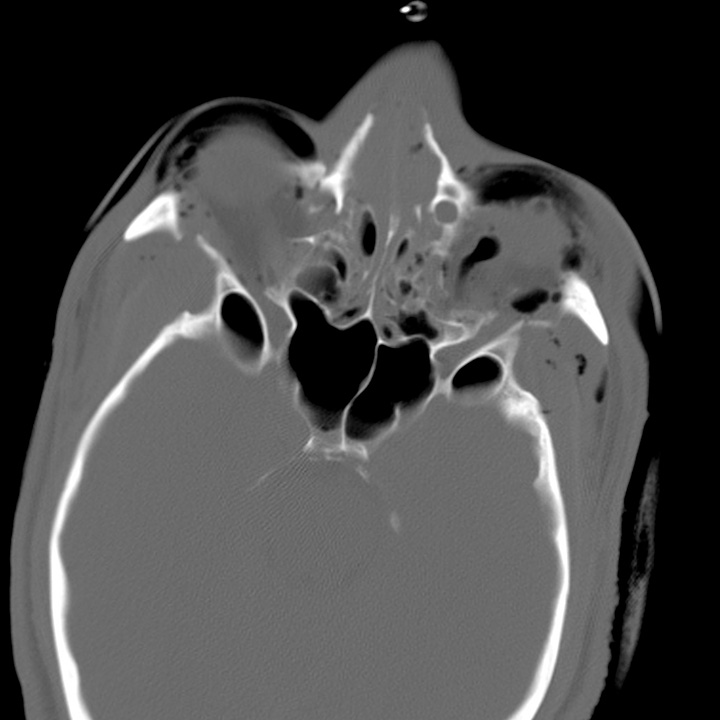
Le Fort III fracture. Severely comminuted bilateral pterygoid, orbital wall, and zygomatic arch fractures. Extensive orbital emphysema. Severe comminution reflects overlap with midface smash pattern.




Thank you. That’s very clear.